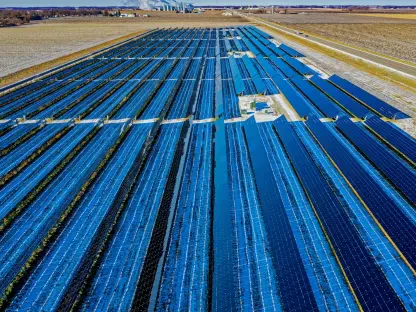As technology companies face increasing energy demands, the quest for sustainable power solutions becomes ever more pressing. Meta, the multinational tech and social media conglomerate, is embarking on an ambitious venture into the realm of geothermal energy as a promising route to meet these demands. By partnering with XGS Energy to generate 150 megawatts of geothermal power for its data centers in New Mexico, Meta is making a bold statement about the future of energy for tech giants. This endeavor not only highlights a growing corporate trend toward renewable energy sources but also reflects Meta’s dedication to sustainability and carbon footprint reduction. Such initiatives are part of a profound industry-wide movement toward renewable and cleaner energy, with geothermal technology emerging as a viable and reliable alternative to more traditional energy sources.
Meta’s Commitment to Renewable Energy
Meta’s partnership with XGS Energy underscores a significant shift in the tech industry’s approach to energy consumption. This collaboration follows a prior agreement with Sage Geosystems, which also aimed to deliver 150 MW of geothermal power for Meta’s data centers. Together, these efforts showcase Meta’s strategic push to utilize clean energy technologies in response to the rising energy demands of its expanding data infrastructures. As artificial intelligence adoption accelerates, the need for sustainable energy sources to support massive computing power becomes critical. Meta’s investment in geothermal technology indicates a forward-thinking approach, acknowledging that renewable energy is pivotal as tech companies continue to grow and evolve.
The economic implications of Meta’s project in New Mexico are substantial, promising significant private investment and job creation. Governor Michelle Lujan Grisham has projected around $1 billion in private-sector investment due to the project, accompanied by 3,000 new construction jobs and 100 positions for plant operations. This development positions New Mexico as a burgeoning hub for data center growth, reinforcing its status as a leader in the transition to clean energy. Furthermore, XGS Energy’s innovative approach to geothermal energy production, which eliminates operational water use, serves as a model of technological advancement that can overcome traditional barriers of geothermal energy sources being dependent on specific geological conditions.
The Technological Edge of Geothermal Energy
XGS Energy’s unique technology allows the company to generate geothermal power without the common limitations of water availability or rock permeability, which typically restrict conventional geothermal plants. By using proprietary systems, XGS is increasing New Mexico’s overall geothermal production capability, marking a significant enhancement to the state’s renewable energy capacity. These technical breakthroughs offer potential scalability and efficiency that could inspire further investments in geothermal technologies across the energy sector. Such advancements align with a broader trend observed in other corporate initiatives, such as Mastercard’s geothermal energy commitment at its New York headquarters, reflecting an industry-wide shift towards alternative energy forms with a lower environmental impact.
Meanwhile, the geothermal industry as a whole is witnessing renewed interest and investment, driven by technological innovations and an increasing need for stable, clean energy. Companies like Fervo Energy, a Houston-based startup, have captured substantial funding to expand clean energy production, further fueling the “skyrocketing demand for clean, firm power.” These developments are spurring investor confidence in geothermal energy, recognizing it as a sustainable and dependable alternative to meet the energy needs of tomorrow.
Broader Implications for the Tech Industry
The regulatory environment plays a crucial role in these developments, with states like New Mexico adopting favorable stances towards renewable projects. Under Governor Lujan Grisham’s leadership, the state’s proactive approach aligns with a broader objective to position itself as a national leader in the next generation of renewable energy. Geothermal represents a promising frontier in these ambitions, contributing to a diversified energy portfolio that can sustain industrial growth while preserving environmental integrity.
For Meta, the use of innovative geothermal technology supports its robust AI infrastructure and continuous data center expansion. Urvi Parekh, Meta’s Global Head of Energy, has indicated that the integration of advanced geothermal systems is strategic for aligning with the company’s long-term vision of providing sustainable, round-the-clock power. This can serve as a blueprint for other tech giants to follow, as they too grapple with balancing immense energy demands with environmental stewardship.
Future Outlook and Considerations
Meta’s collaboration with XGS Energy marks a notable shift in how tech companies address energy consumption. This partnership follows an earlier agreement with Sage Geosystems, setting the stage for delivering 150 MW of geothermal power to Meta’s data centers. These initiatives highlight Meta’s strategic emphasis on clean energy to meet the growing energy needs of its data infrastructures as AI adoption accelerates, demanding substantial computing power. By investing in geothermal technology, Meta illustrates its forward-thinking approach, recognizing renewable energy’s key role as tech companies expand.
The economic impact of Meta’s New Mexico project is considerable, with expectations of nearly $1 billion in private investment and the creation of thousands of construction jobs, alongside 100 positions for plant operations. Governor Michelle Lujan Grisham supports the initiative, which positions New Mexico as an emerging data center hub and a leader in clean energy transition. Additionally, XGS Energy’s innovative geothermal production method, which avoids water use, showcases a technological breakthrough overcoming previous geothermal limitations tied to geological factors.









